

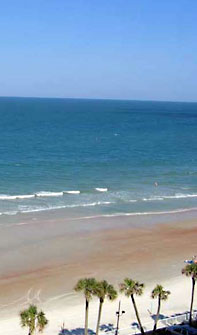
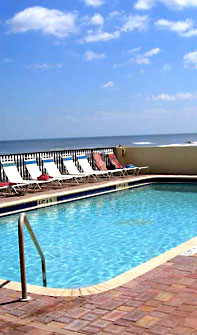
Florida is the most important turtle-nesting environment in the United States. With more than 50,000 nesting turtles summering in our waters, it is not unusual to see Loggerheads, Hawksbills, Kemp’s Ridley and Leatherbacks near our coast. The female sea turtles begin coming ashore in May, and newborn hatching continues through October.
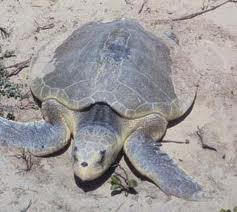 Sea turtles are awkward on the sand, and the nesting process is laborious and difficult. The mother turtle will use her rear flippers to dig a hole and will lay about 100 “ping-pong ball” sized eggs in the nest. She will camouflage the hole by covering it with sand before leaving it. The female sea turtle never returns to her nest.
Sea turtles are awkward on the sand, and the nesting process is laborious and difficult. The mother turtle will use her rear flippers to dig a hole and will lay about 100 “ping-pong ball” sized eggs in the nest. She will camouflage the hole by covering it with sand before leaving it. The female sea turtle never returns to her nest.
The eggs incubate 2 months. As the eggs hatch, the hatchlings will collapse the hole by thrashing about, allowing them to climb out of the nest. The newborn turtles instinctively wait for the cooling of the sand to indicate nightfall before leaving the nest. They will then scramble to the ocean and seek protection in seaweed beds.
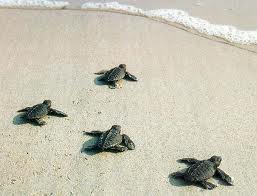 The greatest danger to the hatchlings is artificial lighting. When the newborn turtles leave their nests, they will instinctively move towards the brightest light. Lights along beach streets, beachfront homes and hotels often disorient the babies and lead them in the wrong direction. If they cannot make it quickly to the water and safe areas, they soon die.
The greatest danger to the hatchlings is artificial lighting. When the newborn turtles leave their nests, they will instinctively move towards the brightest light. Lights along beach streets, beachfront homes and hotels often disorient the babies and lead them in the wrong direction. If they cannot make it quickly to the water and safe areas, they soon die.
This is why from May 1 through October 31, all drapes in the condo must be closed when the lights are on in the unit. The Turtle Ordinance requires this, and the fines are very high for non-compliance.
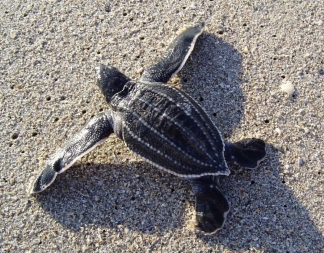 If you come across a newly hatched turtle on the beach, keep well clear of it. Do not shine a light on him for a better view or attempt flash photographs. The same is true of a mother sea turtle coming up onto the beach to nest. If she becomes frightened, she will return to the ocean, and deposit her eggs there. The eggs are not able to incubate in water, and will be eaten by other marine life.
If you come across a newly hatched turtle on the beach, keep well clear of it. Do not shine a light on him for a better view or attempt flash photographs. The same is true of a mother sea turtle coming up onto the beach to nest. If she becomes frightened, she will return to the ocean, and deposit her eggs there. The eggs are not able to incubate in water, and will be eaten by other marine life.

3115 South Atlantic Avenue
Daytona Beach Shores, Florida 32118
Jennifer Davenport
352-551-7191